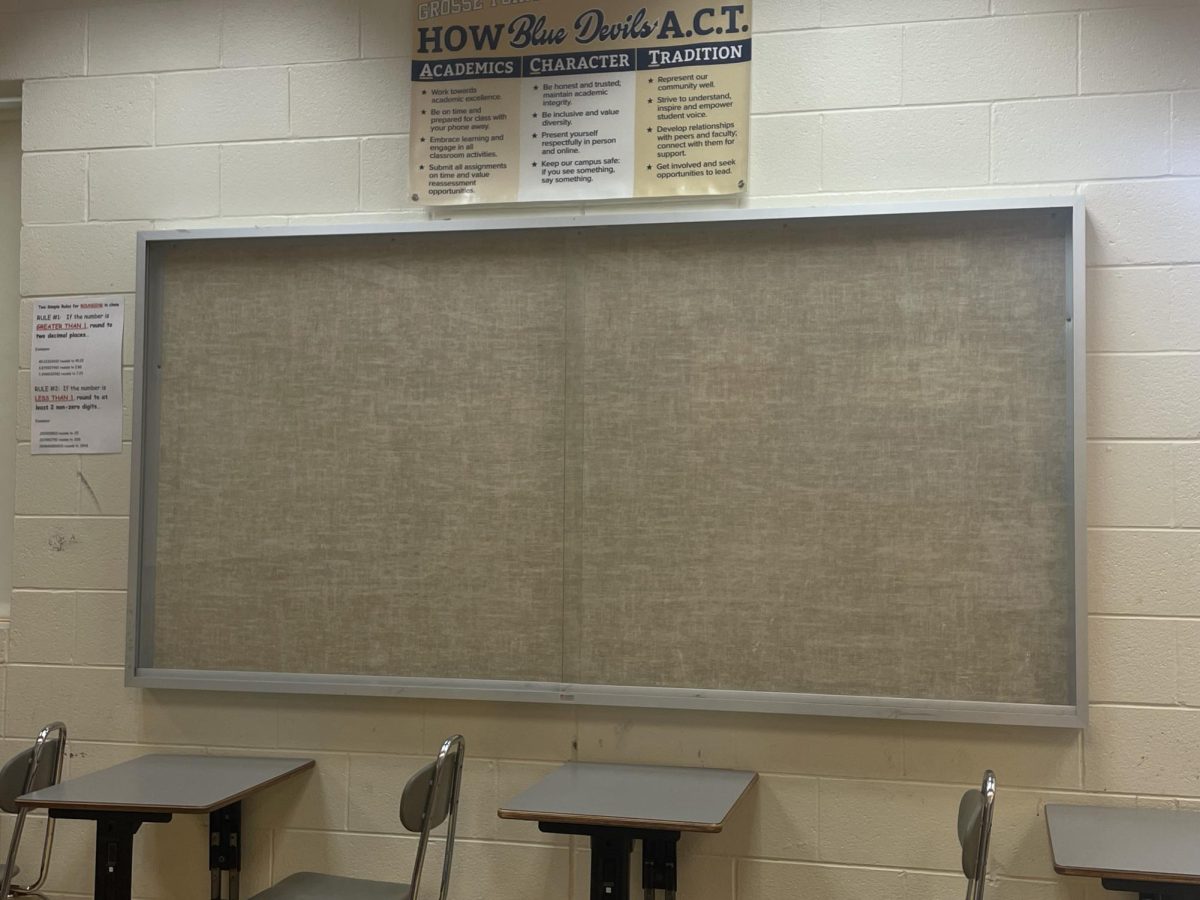At Grosse Pointe South, there is a tradition that sets two teachers apart from the rest. This tradition embodies dedication, competition, and the power of recognition. Among the classrooms, these two teachers have made what is called a “Wall Of Fame”. The rules may differ between the teachers, but the point behind it remains the same, which is to celebrate the dedication of the students that they put into tests or assignments. The tradition shows how much the teachers want and care for their students to succeed in their classroom.
In 2012, Math teacher Alexa McConaghy initiated her plan to make the ‘Wall Of Fame’, where students could aim for a spot by scoring 100% or more on tests or quizzes. She aims to give students a little extra something to reach for and strive for academic excellence.
“I started it for freshmen, who had taken Algebra 1 already as an eighth grader previously, and they just didn’t pass the class or didn’t feel like they were solid enough to continue,” McChonaghy said.
“I don’t want them to just sit through the whole freshman year, annoyed that they had already taken the class, I wanted to give them something to reach for and to keep working at it.”
The wall not only encourages students to achieve academically but also was inspiring to the rest of the class. Observing classmates achieving and working hard to get on the wall, can motivate other students to be like their peers. However, at times, the competition can get overwhelming.
“I like to choose between a couple of tests so that way it keeps the wall surprising to the students and forces them to work hard,” Swietlik says
Science teacher Jeffery Swietlik brought the “Wall Of Fame” to his classroom during his first year of teaching, after learning about it during his education and training to become a teacher. His intention for the wall is to showcase student work in a non-competitive way, emphasizing its educational value within the classroom.
“The suggestion that it leads to competitive behavior is more of a concern for me,” Swietlik said. “ I think that we might be a little bit too competitive at times, especially here at South. With such a very academically focused and high achieving school, the level of competition that exists can do more harm than good. I do not want to see a high level of competition amongst the students.”
Encouraging students to strive for something extra while maintaining a non-competitive and enjoyable atmosphere in the classroom can be quite challenging. It’s crucial to ensure that every student is on the same page for success. However, from a student’s perspective, feeling less intelligent in class can be demoralizing, especially after facing a few setbacks. Not all students are discouraged though. Take Avery Lollar ’28 as an example. As a first-year student in McConaghy’s class, she is determined to work hard.
“Not making it on the wall motivates me to work harder, and to try to get on the wall. But I understand how students can feel after they don’t get on the wall after a few attempts, it can be sad for them.” Lollar said.
The ‘Wall Of Fame’ can be a great way to motivate students and encourage them to excel, however, it can be demotivating for those who don’t make the wall. Striving to get on the wall can get overwhelming at times and may affect students’ confidence if they don’t make it on the wall after several attempts.
Ava McMillin ’27 is a competitive person. With her overachieving academics, McMillin finds it easy to find success in her classes. Having the ‘Wall Of Fame’ in class gives her something extra to work for, as an add-on to strive for academic excellence.
“I think it’s good to always have the motivation to do well in class, you want to be challenged and compete with your peers, but if you are a couple of tests into the school year and you still haven’t made it on the wall yet, it can be embarrassing,” McMillin said.
The teachers’ dedication to the “Wall Of Fame” does not go unnoticed. Their efforts both have a diverse, and engaging approach to teaching. Though the rules differ between the teachers, the point remains the same: giving students something different to aim for. Teachers want their students to achieve academically in their class, and having the “Wall of Fame” as an extra goal to achieve, can be especially beneficial to the classroom. Especially when the end of the year is around the corner and students are eager to make it on the wall before the last test.
“A bit of competitiveness is always seen at the end of the year when students are seriously determined to get on the wall, but sometimes at the end of the year it’s a little harder to get there, but seeing the determination and effort they put into the studying is why the wall stays up, to show how hard students work to achieve excellence on tests,” McConaghy said.












































































